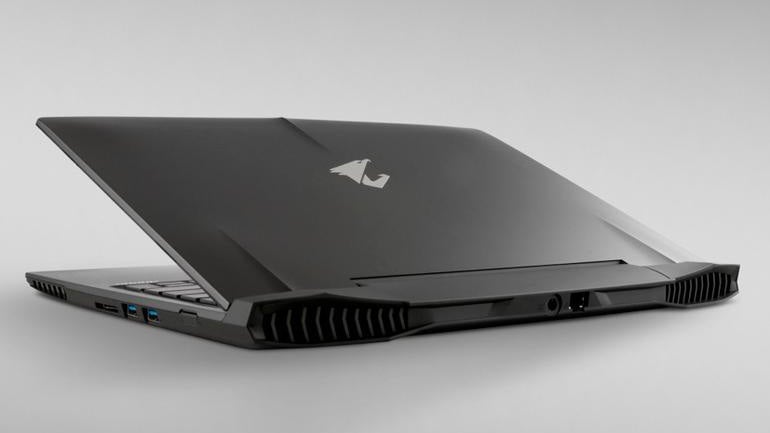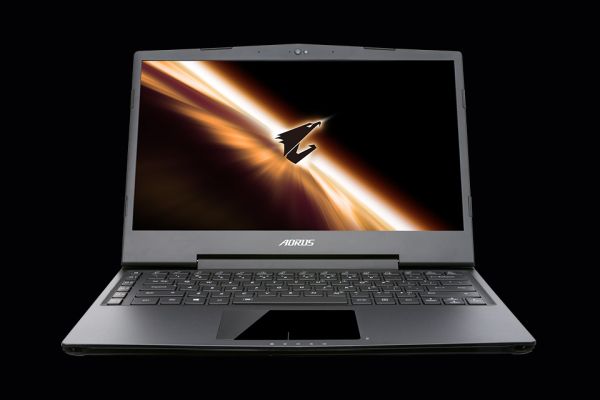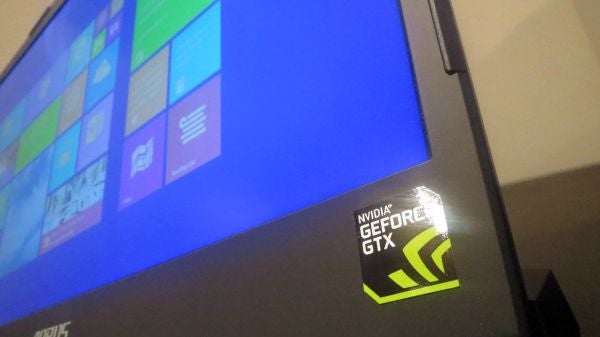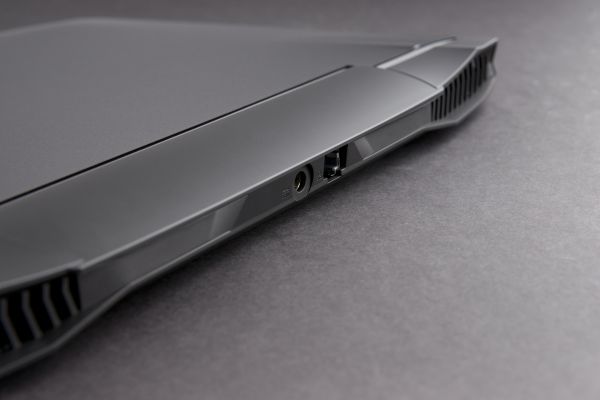Gigabyte Aorus X3 Plus Review
Gigabyte Aorus X3 Plus
A tiny gaming notebook with a mighty screen. Is this the ultimate portable powerhouse?

Sections
- Page 1 Gigabyte Aorus X3 Plus Review
- Page 2 Performance, Heat, Noise and Battery Life Review
- Page 3 Keyboard, Trackpad, Options and Verdict Review
Verdict
Pros
- Impressively slim and light
- Huge gaming power
- Innovative, fast storage
- Powerful Core i7 processor
- Great screen quality
Cons
- Inconsistent build quality
- Hot, loud cooling hardware
- Screen resolution is too high
- Expensive
Key Specifications
- Review Price: £1630.00
- 3,200 x 1,800 13.3in screen
- Nvidia GeForce GTX 870M graphics
- Intel Core i7-4860HQ processor
- 2 x 256GB M.2 SSDs in RAID 0
- 23mm thick; 1.8kg
First reviewed September 2014
What is the Gigabyte Aorus X3 Plus?
The Aorus X3 is one of the growing breed of gaming notebooks that have more in common with Ultrabooks than the bulky machines we’ve settled for in the past.
The Aorus is the boldest and most ambitious small gaming notebook we’ve seen so far. It’s got a Core i7 processor, one of Nvidia’s most powerful mobile graphics cores, and a mighty 3,200 x 1,800 resolution screen.
SEE ALSO: Best Gaming Laptops

Gigabyte Aorus X3 Plus: Design & Build Quality
This is the second notebook we’ve seen from the new Aorus brand, and the X3 Plus retains the same distinctive design as the larger X7.
The chunkiest part of this laptop is behind the screen, where the matte black base rises upwards to house cooling hardware. This back section is topped off by a couple of vents that look like they’ve been cribbed from a sports car. Gigabyte keeps the rest of this laptop clean and unfussy: that matte material is used throughout, and there’s a pleasing lack of lights and other ostentatious features.
It’s a brooding, no-nonsense laptop that’s all about the hardware. It’s arguably better-looking than the loud-mouthed Alienware 14, and there’s no denying that it wins style points when up against the bland, frumpy Schenker XMG P304.
Both rivals are traditionally chunky gaming systems that happen to have smaller screens, but the Aorus is 23mm thick and weighs just 1.8kg. That’s a couple of hundred grams and nearly 10mm better than the Schenker, and it’s even further ahead of the bulky Alienware.
That makes the X3 the most portable gaming notebook we’ve ever reviewed – but the situation isn’t that clear-cut. The X3 feels like it’s bursting at the seams: when we pressed the underside we heard creaking, and it made a similar whine when we moved the screen back and forward. The wrist-rest is stronger, and the materials feel high-quality, but we’d protect the X3 with a sturdy sleeve before taking it to LAN parties.
The mini-DisplayPort and HDMI outputs are future-proofed, 4K-capable connectors, and there are two USB 3.0 ports, a USB 2.0 port and an SD card reader. Internal connectivity ticks the boxes we expect from gaming notebooks: Killer-branded Gigabit Ethernet, dual-band 802.11ac Wi-Fi and Bluetooth 4.0.
SEE ALSO: Best Laptops, Ultrabooks and Hybrids

Gigabyte Aorus X3 Plus: Screen & Sound Quality
Gaming laptops have largely steered clear of going beyond 1080p, but the 13.3in screen in the X3 Plus breaks tradition with a 3,200 x 1,800 resolution.
There’s no denying its clarity. With Windows 8.1’s page furniture scaled up to mimic a 1080p display every icon and letter is pin-sharp, and pictures look fantastic. The Start screen, in particular, looks superb.
Software that has been properly optimised to take advantage of the pixel count is easy to use, but the number of apps ready for life beyond 1080p still falls short of our expectations: many Adobe packages are hampered by tiny icons and Chrome is a blurry mess. Steam doesn’t shrink but gets blurry instead, while Origin is so small we had to squint.
The high resolution and its inconsistent scaling make the X3 awkward to use for work, and it’s little better when the games are loaded. The expanded pixel-count has the potential to make games look sharper and more detailed, but playing at native resolution requires much more graphics horsepower – so we either had to scale back to 1080p or reduce the quality settings to get games running smoothly.
It’s a shame Gigabyte has opted for the high resolution, as the panel inside is excellent. The 362 nit brightness squeaks past the Schenker and easily beats the Alienware, and it makes a big impression: our test games were vivid and rich, with blazing colours at the top of the scale and deep blacks at the bottom. That last point is helped by the 0.25 nit black level – again, better than the competition.
SEE ALSO: Best Windows 8 Laptops

The contrast ratio of 1,448:1 is better than the rest, too, and it means that only the deepest of black shades can’t be distinguished.
The Gigabyte’s screen displays 94.1% of the sRGB gamut, but it’s colour accuracy where this panel falls down. The average Delta E of 3.12 is excellent, but not quite as good as the Schenker – and it’s the same for colour temperature, which is a little colder.
Quality is excellent, so games look great when played at 1080p, but the high resolution is simply not necessary: there’s not enough power for games to properly exploit the extra pixels, and many applications aren’t optimised. Opting for this screen resolution is, at best, a future-proofed move.
The speakers aren’t as loud as the booming Alienware, but quality is surprisingly good: the high-end is rich, and the mid-range and low-end are both meaty and deep. There’s perhaps a little too much of that low-end sound here, but we’d use these for gaming if alternatives weren’t available.
How we test laptops
Unlike other sites, we test every laptop we review thoroughly over an extended period of time. We use industry standard tests to compare features properly. We’ll always tell you what we find. We never, ever, accept money to review a product.


